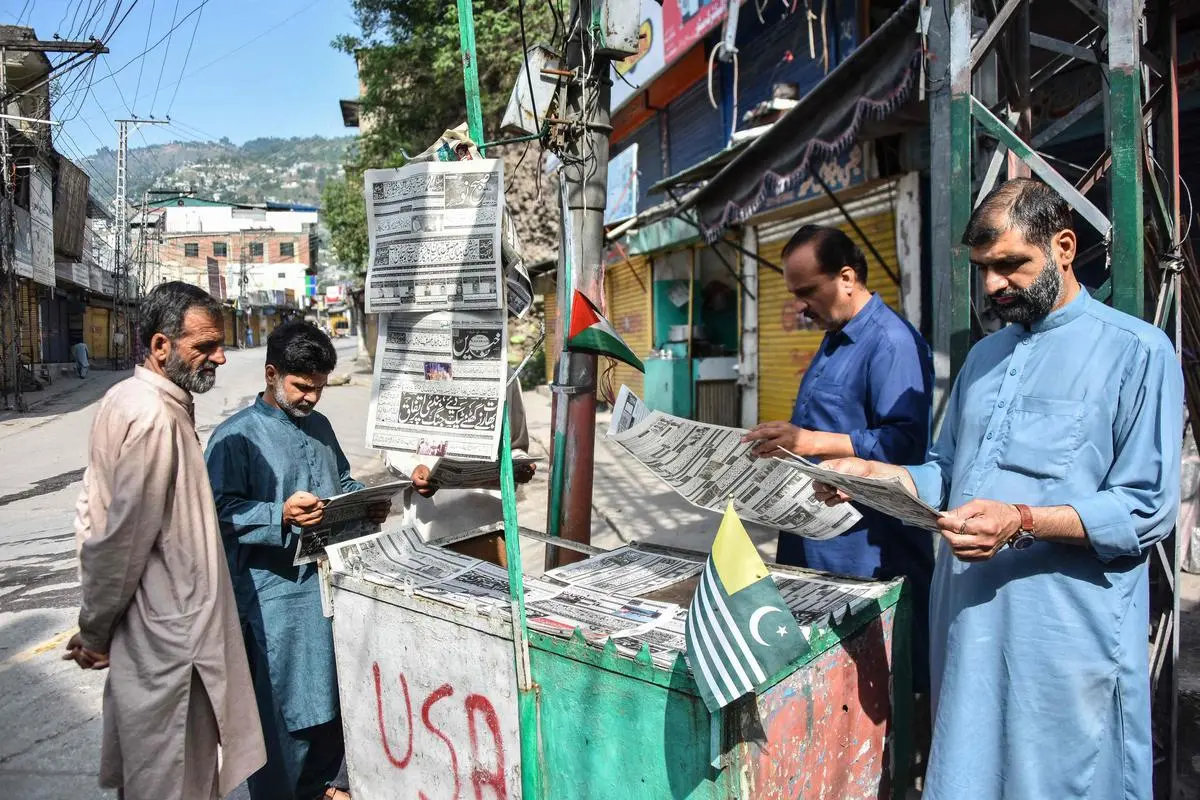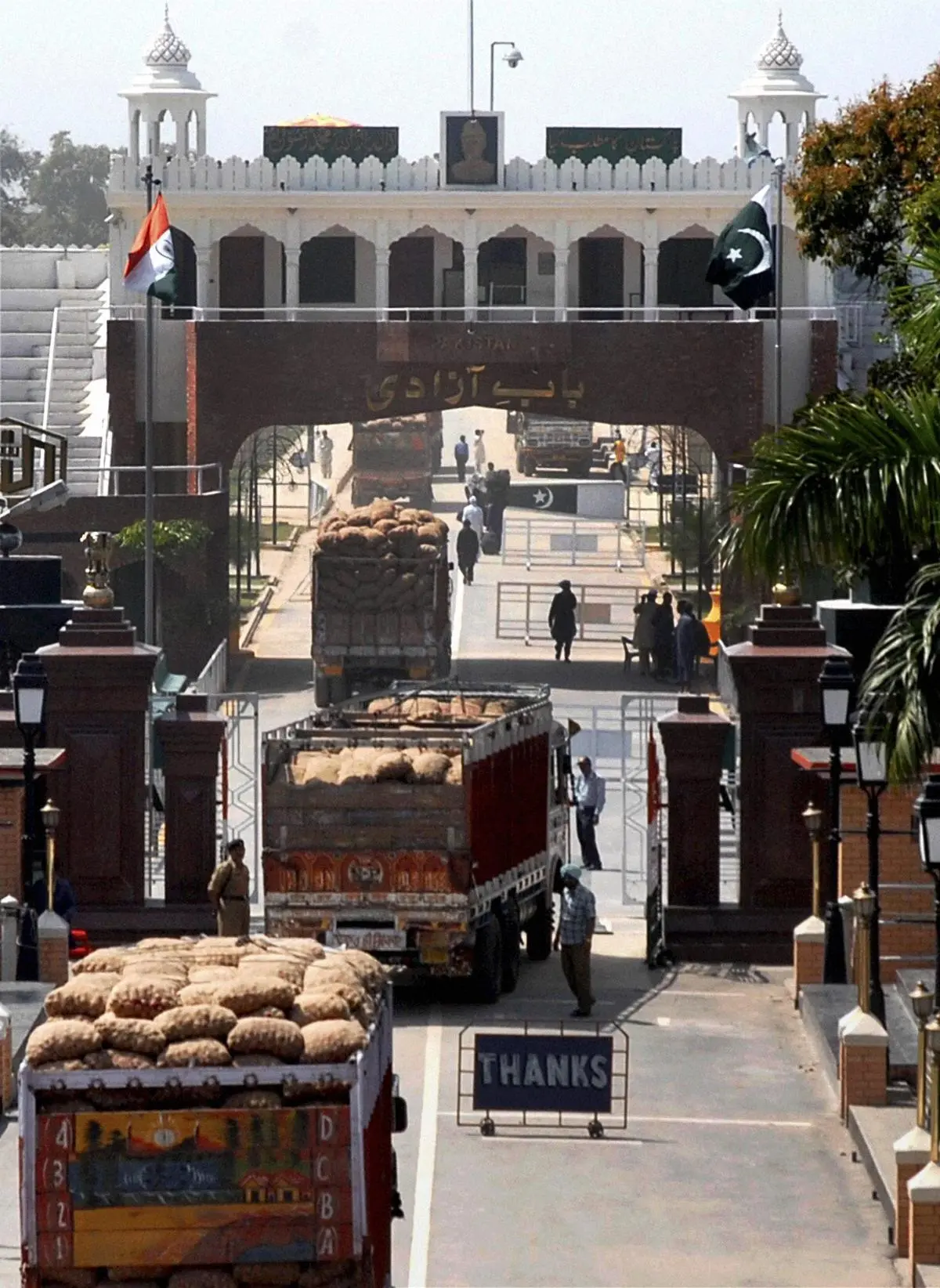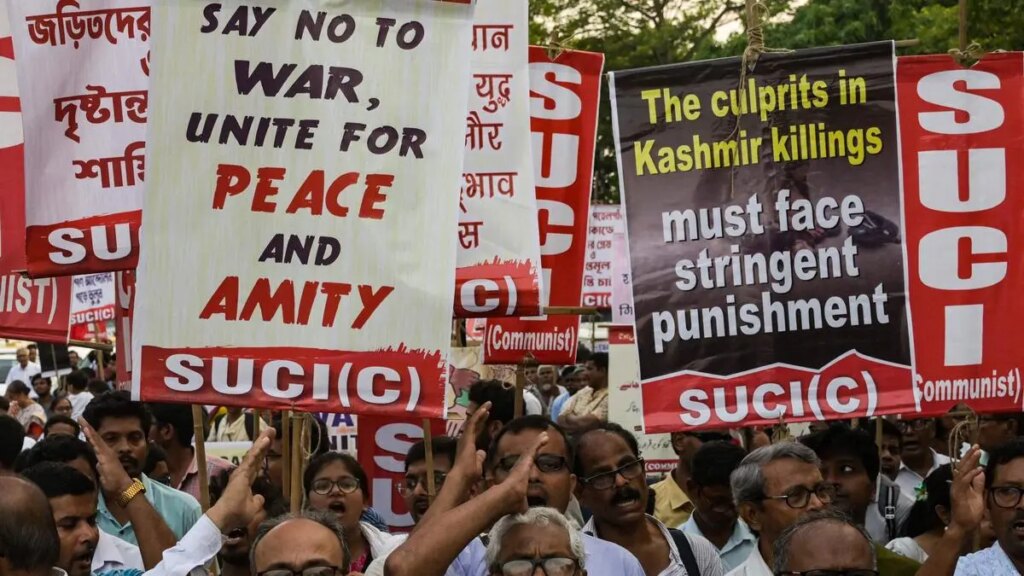After the brazen killing of 26 tourists by terrorists in Pahalgam, India and Pakistan unleashed a series of war salvos, which were aired in real time and amplified by social media and television. A shaky ceasefire of sorts was finally brokered, with US President Donald Trump claiming credit for it.
One wondered what had happened to the voices of reason—the mediators and the pacifists. The current discourse is directed by hate-spewing TV news anchors and motivated social media warriors who are bent on spreading disinformation and malice. Statements issued by the government and military spokespersons are interpreted at will by self-appointed analysts with hot takes.
In the midst of the click-baiters and the dis/misinformation peddlers, a cross-section of people in the two nations remain deeply invested in peace. But they are not being heard in the din of conflict.
Dialogue and peace
There was a time when the people of India and Pakistan spoke to each other, not through name calling on social media, but through platforms that valued peace, reconciliation, and dialogue. Even at the height of tensions after the 2001 Parliament terror attack and the 2008 Mumbai terror attack, there was a wider recognition that people-to-people contact and dialogue should not be completely derailed, even if trade and diplomatic ties are affected.
In 2004, Prime Minister Atal Bihari Vajpayee and Pakistan’s President Pervez Musharraf signed a joint statement in Islamabad agreeing to hold dialogues and take steps towards the normalisation of relations. The following year, a joint statement between the then Prime Minister Manmohan Singh and Musharraf reiterated the need for trade and economic relations, people-to-people contact, and confidence-building measures.
Also Read | The war has paused—will peace get a word in?
This laid the foundation for civil society organisations and think tanks to actively engage in intra-Kashmir dialogues with Kashmiri Pandits and Muslims, cross-LoC dialogues, and interactions with Pakistan. Track-II dialogues in New Delhi and Islamabad and other cities in India and Pakistan involving retired diplomats, military personnel, and journalists were commonplace. The momentum was derailed after the 2008 terror attacks in Mumbai, but the backroom efforts at dialogue continued.
Organisations such as Centre for Dialogue and Reconciliation, Institute of Peace and Conflict Studies, Delhi Policy Group, and WISCOMP were known for promoting dialogues among various actors related to the Kashmir dispute. Academicians and students could visit each other’s countries, and civil society organisations on both sides endorsed trade and mobility to increase the stakes for peace.
Blow to peace
A major blow was dealt to these initiatives when the BJP came to power in 2014. Pakistan went through political turmoil; Prime Minister Nawaz Sharif was convicted for corruption, and subsequently, Prime Minister Imran Khan was sent to jail and barred from contesting elections. The all-pervasive hand of the military in elections and political appointments has only worsened matters in Pakistan.

Residents read morning Urdu newspapers with the headline “The ceasefire between Pakistan and India”, in Muzaffarabad in Pakistan-occupied Kashmir on May 11.
| Photo Credit:
SAJJAD QAYYUM/AFP
Dialogue, social, and cultural contact between people, and efforts at outreach between the two countries have rapidly declined. The Delhi-Lahore bus service and the Srinagar-Muzaffarabad bus service (which connects both sides of the LoC) were derailed whenever violence broke out in Kashmir. Currently, both services remain suspended.
As India and Pakistan engage in hostilities, the apprehensions of people whose survival depends on peace are muted. These include not just communities and villages at the border. A major constituency that anxiously awaits the end of hostilities between the two nations are the fishermen on both sides who might have inadvertently strayed into each other’s territorial waters.
Fishermen’s woes
According to Central government data, as of January 2025, 217 Indian fishermen are in Pakistani jails and 81 fisherfolk from Pakistan are in our jails.
It was partially through the efforts of the Pakistan-India Peoples’ Forum for Peace and Democracy (PIPFPD), Pakistan Fishworkers Forum, and National Fishworkers Forum that both countries signed a bilateral agreement on consular access in 2008 to repatriate fishermen and other civilian prisoners.
Under the agreement, both countries are required to exchange lists of prisoners of each other’s nationalities, and consular access must be granted to those detained within three months of arrest.
“The desire for peace is deep-rooted and suppressed, contrary to the hate that is strident, manufactured, and visceral. But peace needs space for expression.”
Consular access is necessary to determine the nationality of the prisoners without which the process of repatriation cannot begin.
However, the implementation of the agreement leaves much to be desired, with consular access being delayed to imprisoned fisherfolk. There have been instances when prisoners have died in custody, or have continued to remain in detention, well beyond their sentences.
Dormant committee
In 2007, India and Pakistan also set up a joint judicial committee on prisoners consisting of four retired judges from each side who would visit and meet prisoners in each other’s jails.
The Committee met seven times, with the last meeting hosted by India in October 2013. The committee became dormant with judges not being named on either side. In 2018, India named a set of retired judges. Pakistan is yet to reciprocate, leaving the committee ineffective and in limbo.
Pakistan released 432 fishermen in 2023-24. However, the momentum has been lost and both sides have dithered in subsequent releases. Prisoners of war from the 1971 war, and individuals who have overstayed their visas or inadvertently crossed over to the other side are other categories of prisoners who get caught in the crossfire.
With the current state of hostility, it is to be expected that the release of fishermen prisoners will not be prioritised. The war has broken up families, with India forcibly deporting Pakistani nationals who have lived in the country for decades and know no other home. Spouses have been separated from each other, and children from parents. Pakistanis who need critical healthcare and are in the country on medical visas have been asked to leave.
War and trade
Trade with Pakistan, which was anyway at minuscule levels, is further on the decline. The Bureau of Research on Industry and Economic Fundamentals, a think tank, has estimated that significant losses were caused to border economies in Punjab and Kashmir owing to the sharp decline in trade over the years, especially after the 2019 attack by Pakistan in Pulwama.
In 2018-19, bilateral trade between the two countries was worth $2.6 billion. India’s exports to Pakistan in April-January 2024-25 totalled $447.65 million while imports touched $0.42 million.

Trucks loaded with vegetables on the way to Pakistan through the Attari-Wagah border near Amritsar, in August 2010. Bilateral trade, now completely stopped, was badly affected between 2018 and 2024.
| Photo Credit:
PTI
Where does this leave us? On the day that Operation Sindoor was launched, more than 100 prominent peace activists from India, Pakistan, Bangladesh, and Nepal met online to register their opposition to war.
This constituency of peace builders has been fragmented and disconnected over the past decade, its momentum broken by a peace-averse political leadership and rabid media which prefer animosity over amity and build TRPs on appeals to coarse nationalism.
The violence of Pahalgam and Operation Sindoor has again mobilised the peacemakers, who are regrouping and finding their voice once more. A Change.org petition prepared by a cross-section of civil society networks accumulated nearly 7,000 signatures in less than a week of being issued.
Peace builders united
Networks like Southasia Peace Action Network (SAPAN), PIPFPD, and South Asia Forum for Human Rights are regularly convening and issuing statements calling for permanent peace and the restoration of dialogues. Many of these initiatives are not reported in the media and receive little attention, even if they are sometimes reported.
Public memory is short, so it should be reiterated that when India and Pakistan tested nuclear weapons in the 1990s, large swathes of people on both sides came out in large numbers to protest the nuclear arms race. The desire for peace is deep-rooted and suppressed, contrary to the hate that is strident, manufactured, and visceral. But peace needs space for expression.
Also Read | What should we peace advocates do now?
Some years ago, this author, then a student, saw Pakistani students participating in debating competitions being held in Delhi University. Indian students too went to participate in debating society competitions in Karachi and Lahore. Pakistani music bands were a fixture on the university festival circuit and keenly anticipated. And it is common knowledge that soap operas and performers from both sides are in high demand on the other side.
These connections have been snapped forcefully and there is uncertainty about when they might be restored. An entire generation of Indians and Pakistanis is growing up oblivious to the history of shared ties between the two nations, believing that violence is the only relationship possible between these two countries. That spell must be broken.
Urvashi Sarkar is a freelance journalist in Mumbai. She has reported on various issues, ranging from foreign policy and think tanks, to climate change, refugee issues, education, nuclear policy and the UN.
Source:https://frontline.thehindu.com/politics/india-pakistan-peace-cross-border-dialogue-kashmir/article69597830.ece

